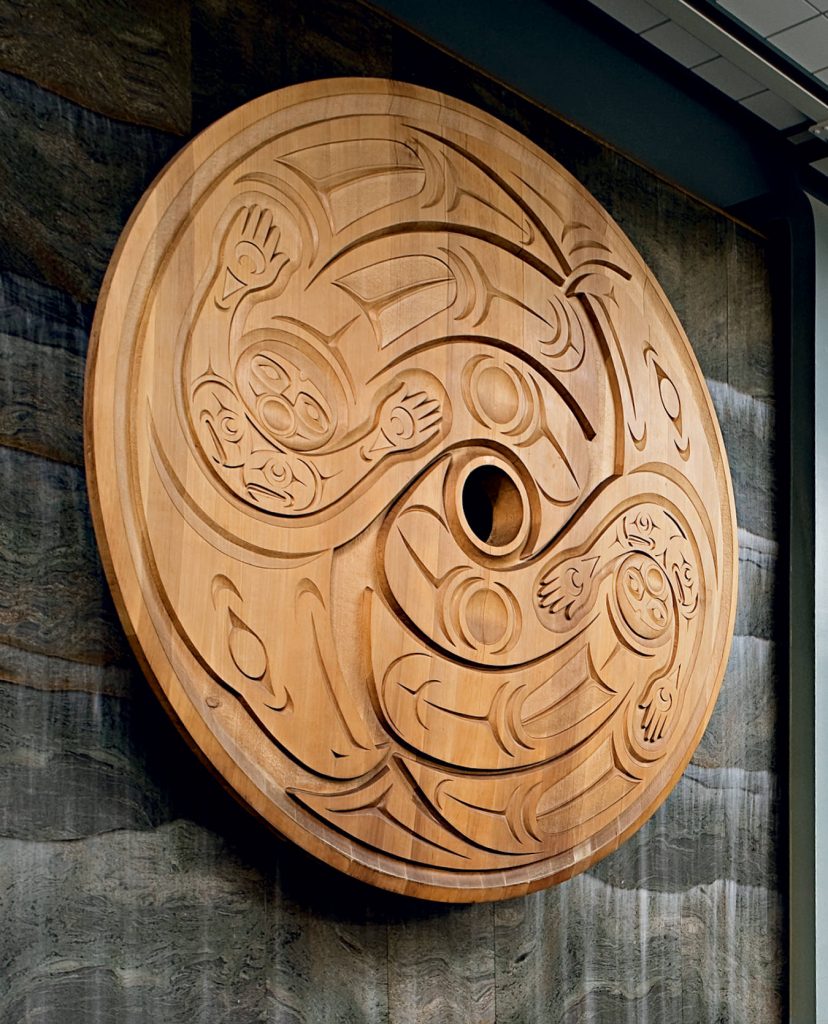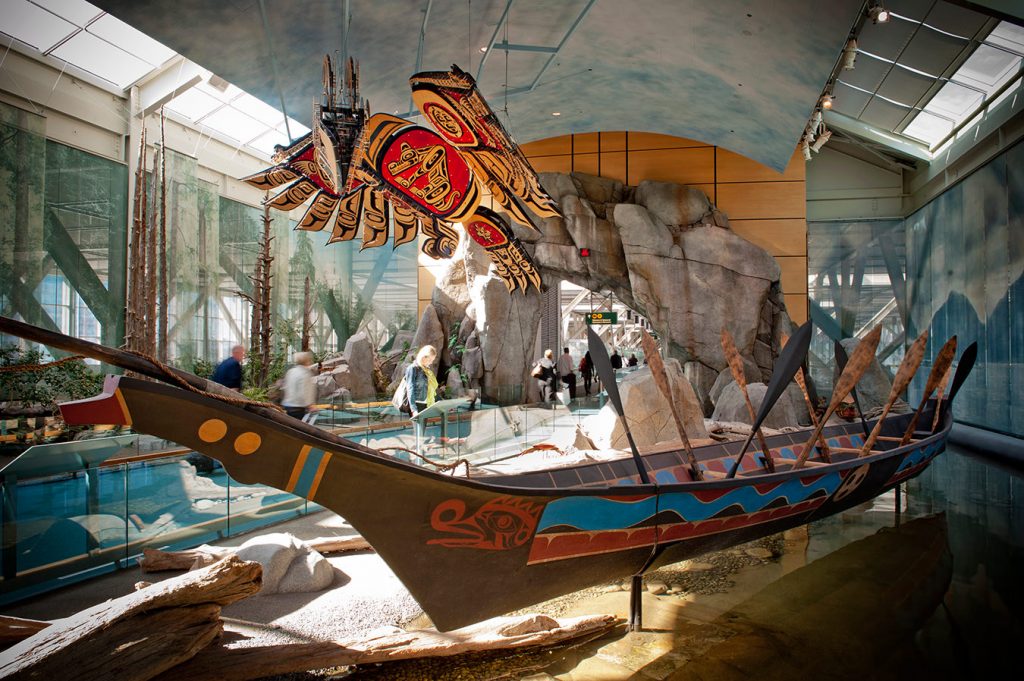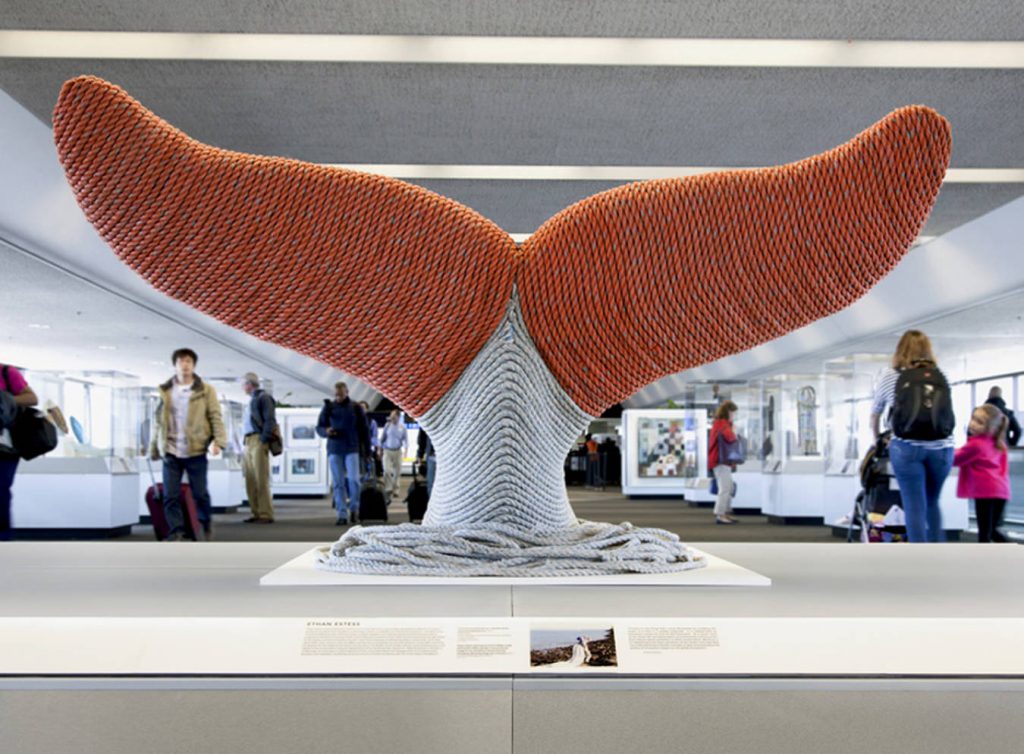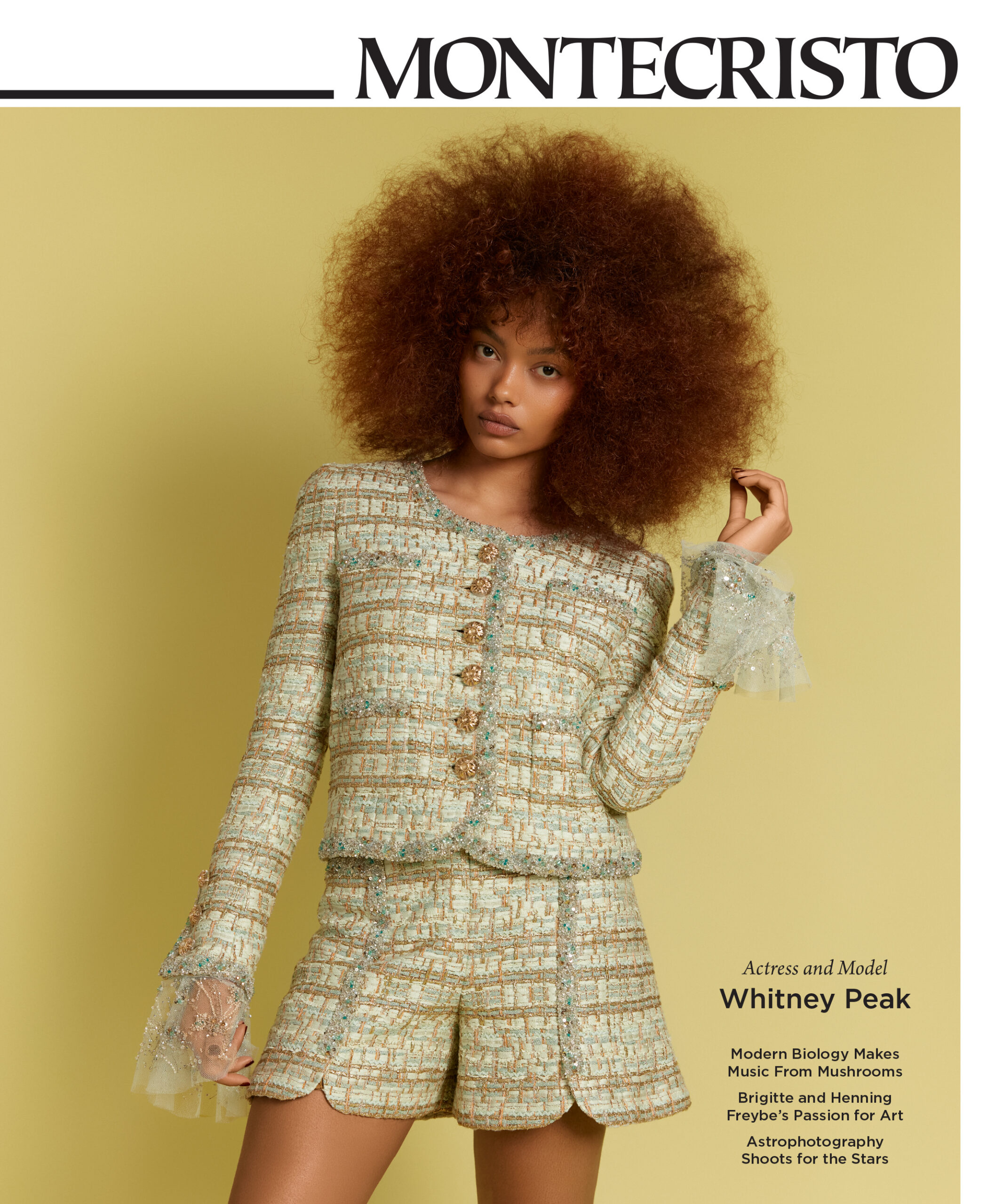Arriving at most terminals in London’s Heathrow Airport can be nothing short of soul-destroying, often involving seemingly never-ending, low-ceilinged corridors, even longer queues at Customs and Immigration, and blank cream walls with nary a window in sight. How different it is to arrive at Vancouver International Airport (YVR) and tread the light-filled elevated walkways, admire stations that celebrate the natural landscape of British Columbia, and finally come to the towering waterfall installation at the entry into the International Arrival Hall. Here, the 4.8-metre-wide Flight (Spindle Whorl), carved by Musqueam artist Susan Point, greets passengers. Flight was made especially for the space in 1995 from red cedar, and it represents the fact that the land on which the airport was built is part of Musqueam territory. Two figures with their arms outstretched—a welcoming gesture, but also an intimation of flight—are designed into the image of an eagle, traditionally considered a symbol of power. As one descends into the arrival hall, one is welcomed by two carved, double-sided, standing Female and Male Welcome Figures that measure 5.2 metres high, also made by Point from red cedar: graceful sentries who set the tone of one’s stay in the city and celebrate Vancouver’s rich heritage.
Many global airports are in the process of using art to welcome and revive travellers exhausted by the travails of modern-day flying. Vancouver International Airport uses large-scale art like Point’s throughout its departure and arrival zones to create calming and engaging environments that remind visitors and locals alike of the landscape and creativity beyond the confines of the airport. Additionally, YVR has striven to create links between the airport and the wider artistic community and has provided over $200,000 in scholarships and awards to young B.C. First Nations artists since 1993. According to Anne Murray, vice-president of community and environmental affairs at YVR, the idea behind the art and architecture at the airport “is to create a sense of place, an ambience that celebrates our history, culture, and geography so that visitors know the moment they step off the plane that they’ve arrived in B.C.”
YVR is not the only international airport to fill its spaces with local and international art. Among the first airports to incorporate rotating art programs into the airport-scape, the San Francisco Airport Commission created the SFO Museum in 1980 in collaboration with the Fine Arts Museums of San Francisco. Its ongoing calendar of short-term exhibits feature the photographic work of individual artists, most recently Chris McCaw, Lyle Gomes, and Russell Lee, as well as themed historical exhibits. These works serve to humanize the airport. To this end, the airport has installed 25 galleries throughout the airport terminals and actively sought partnerships with a number of California museums and arts institutions. It has also carefully fostered its relationship with local children, presenting exhibitions of two-dimensional artwork from schools and youth organizations in the Bay Area.
Dallas/Fort Worth International Airport offers walking tours, podcasts, and a sculpture garden with work by Anthony Caro, among others. Toronto Pearson International Airport has eight permanent installations, along with several temporary exhibit spaces, which recently featured the satirical works by British photographer Martin Parr. These programs all strive to enrich the experience of travellers, beautify the airport space, and confront visitors with works of art that they may not otherwise actively seek out.
These artistic displays do not bring any tangible commercial benefit to airports. Except for the artists and museums featured, no one seems to financially profit from these arrangements. However, there appears to be a direct correlation between the amount and quality of art in airports and whether the airport is publicly or privately owned. YVR and Pearson are operated by their own transport authorities, while SFO and Dallas/Fort Worth are owned by the cities that they represent, and Heathrow is privately owned.
There is presumably nothing to gain through the ornamentation of its airports. Art and cultural displays in airports are the ultimate public art: exhibited to benefit its countless visitors, who are, at least in the areas behind security, a captive audience. It is hoped that locals and visitors will have their interest piqued by such exhibits and seek out more cultural experiences within the airport’s city.











